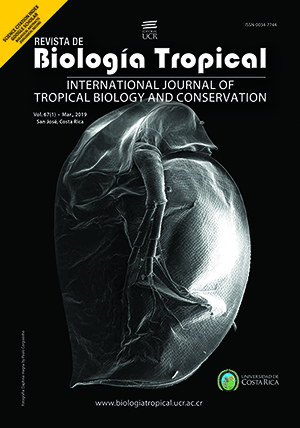Abstract
Climate change is mainly generated by an increase of greehouse gas emissions. The Intergovernmental Panel on Climate Change (IPCC) has established mitigation and adaptation as strategies to deal with climate change. However, few studies have been developed jointly. With the purpose of studying the possible synergies between mitigation and adaptation, three coffee production systems in the municipality of Líbano: agroforestry systems (AFS) with Cordia allidora, AFS with plantain and monocultures, with four replications by treatment, were evaluated. As mitigation indicator, the carbon footprint in the coffee production and processing was estimated, whereas the adaptation was measured as the ant diversity. The AFS with C. alliodora favor both mitigation and adaptation to climate change since they have a positive carbon footprint and the greatest richness of ant genus (12.8 vs -3.0 vs -6.4 Mg CO2e/ha/year in carbon footprint and 1.3 vs 0.6 vs 0.6 of Margalef Index of ants in AFS with C. alliodora, AFS with plantain and monoculture, respectively). The agricultural production systems, environmental-friendly managed and associated with native trees, are a good strategy to implement in programs of mitigation-adaptation of climate change. The inclusion of native tree favors the producer’s economy and increases the shelter places and the minimal conditions for surviving, similar to natural ecosystems so the different groups of animals for climate change adaptation.
##plugins.facebook.comentarios##

This work is licensed under a Creative Commons Attribution 4.0 International License.
Copyright (c) 2019 Diana Skarly Canal Daza, Hernan Jair Andrade Castañeda



